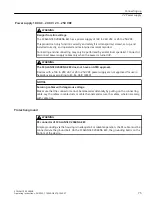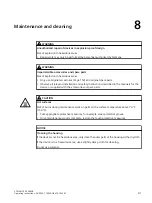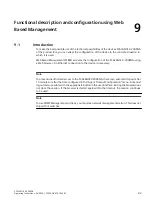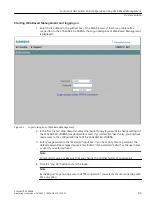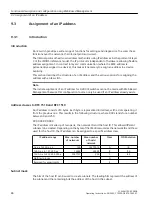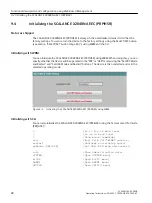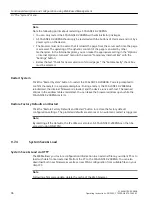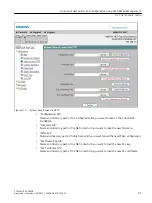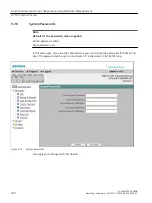
A subnet is defined by the subnet mask. The structure of the subnet mask corresponds to that of
an IP address. If a "1" is used at a bit position in the subnet mask, the bit belongs to the
corresponding position in the IP address of the subnet address, otherwise to the address of the
computer.
Example of a class B network:
The standard subnet address for class B networks is 255.255.0.0; in other words, the last two
bytes are available for defining a subnet. If 16 subnets must be defined, the third byte of the
subnet address must be set to 11110000 (binary notation). In this case, this results in the subnet
mask 255.255.240.0.
To find out whether two IP addresses belong to the same subnet, the two IP addresses and the
subnet mask are ANDed bit by bit. If both logic operations have the save result, both IP addresses
belong to the same subnet, for example 141.120.246.210 and 141.120.252.108.
Outside the local network, the described division of the end node address has no significance.
For packet switching here, only the entire IP address is of interest.
Note
In the bit representation of the subnet mask, the "ones" must be set left-justified; there must be
no "zeros" between the "ones".
9.3.2
Initial assignment of an IP address
Configuration options
An initial IP address for an IE switch cannot be assigned using Web Based Management or the
Command Line Interface because these configuration tools require that an IP address already
exists.
The following options are available to assign an IP address to an unconfigured device currently
without an IP address:
• By DHCP (factory setting)
When the devices ship and after resetting to factory defaults, DHCP is active. If a DHCP server
is available in the local area network, and this responds to the DHCP request of the IE switch,
the IP address, subnet mask and gateway are assigned automatically when the module first
starts up.
• With the STEP 7 configuration tool
• With the NCM PC configuration tool
• With PNI (SINEC Primary Network Initialization)
This program for initial commissioning of network devices uses the DCP protocol o detect
devices in a network and assign an IP address.
For more information, refer to PNI (
https://support.industry.siemens.com/cs/products?
For more detailed information on using the configuration tools, refer to the relevant manuals.
Functional description and configuration using Web Based Management
9.3 Assignment of an IP address
SCALANCE X-200RNA
Operating Instructions, 04/2022, C79000-G8976-C342-07
87



